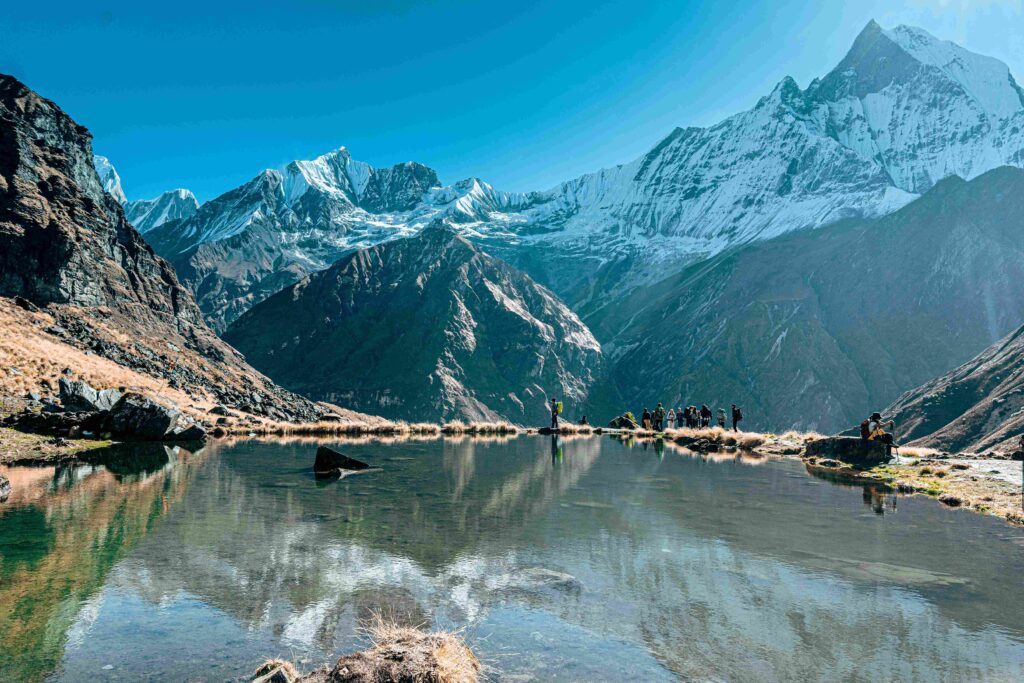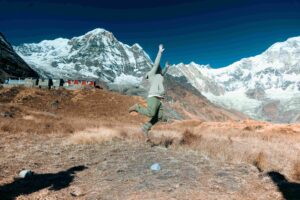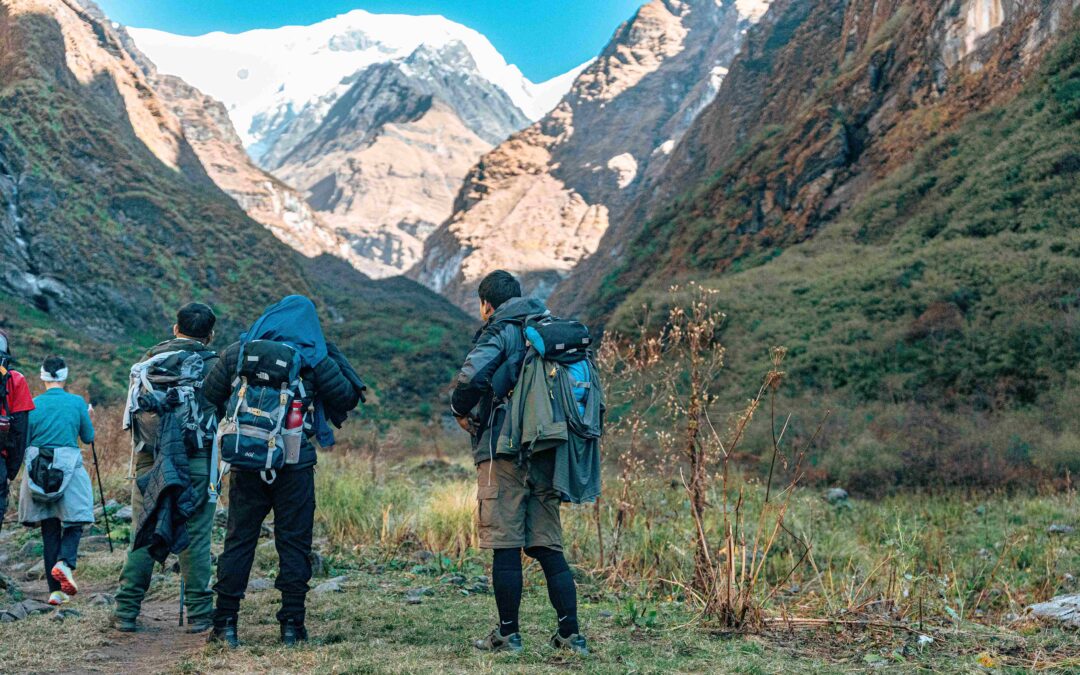Life in Nepal’s remote communities is a daily struggle, especially for nomadic families facing harsh conditions and limited resources. This donation campaign is bringing hope where it’s needed most. By providing essential support—like food, education, and shelter—this initiative is creating real change for people often overlooked. Every contribution has the power to uplift lives and build a brighter future for those living on the margins. Let’s explore why this campaign truly matters and how you can be part of something transformative.
The Nomadic Way of Life in Nepal
Nepal’s nomadic communities, often living in some of the most remote and rugged landscapes in the world, are a living testament to human resilience and adaptability. These groups have shaped their way of life over generations, blending ancient traditions with the ability to survive in environments where nature often seems unforgiving. Their unique lifestyle offers not just a glimpse of Nepal’s heritage but also lessons on endurance and community spirit.
A Glimpse into Nomadic Traditions
Nepali nomads, such as the Raute people, follow age-old traditions that have beautifully preserved their identity. These semi-nomadic groups often move through challenging terrains, from the dense forests of western Nepal to the fringes of the Himalayan foothills. Living off the land, they survive through traditional craftsmanship and seasonal migration.
What sets them apart is their extraordinary skill in carving wooden household items such as bowls, plates, and storage containers. These handmade goods are traded with nearby villages, often in exchange for grains or other essentials. Hunting also plays a significant role in their daily lives. Many communities depend on sustenance hunting to survive, using techniques passed down from their ancestors.
Their social structure is deeply rooted in oral traditions and community-based decision-making. They value self-sufficiency, preferring to live disconnected from modern systems. Interestingly, many nomads have resisted permanent settlement programs by the government, choosing instead to maintain their independent way of life. It’s a lifestyle steeped in simplicity and purpose, but it comes with its own set of challenges.
Challenges of Remote Communities
Life for Nepal’s nomadic groups is far from easy. These communities face profound difficulties that threaten not just their daily survival but also the preservation of their culture. One of the most pressing issues is the lack of access to healthcare. Villages and towns with medical facilities are often days away on foot, making it almost impossible for nomads to receive adequate care when illnesses strike.
Education is another challenge. Nomadic children rarely attend school due to frequent relocations and the absence of nearby schools in remote areas. Without formal education, younger generations struggle to integrate into changing social and economic systems, leaving these communities vulnerable to exploitation and exclusion.
Poverty further complicates their lives. Many nomads live with uncertainty, relying on unstable food sources and trade resources. Seasonal changes, especially harsh winters, can devastate their already limited supplies. Additionally, as Nepal modernizes, forest conservation laws and land-use restrictions sometimes conflict with their traditional way of life, restricting movement and access to resources they’ve depended on for centuries.
These obstacles aren’t just practical—they’re existential. Without support, these nomadic communities risk losing their identity as younger members may feel pressured to abandon their heritage in search of stability elsewhere. Addressing these problems requires understanding, compassion, and action to preserve their culture while opening doors to better opportunities for health and education.
Their struggles and traditions are a powerful reminder of the importance of standing in solidarity with those living on the margins. What could be more inspiring than knowing that, through collective efforts, we can help rewrite their story?
The Inspiration Behind the Donation Campaign
Every meaningful movement begins with a spark—a heartfelt moment that ignites action. This campaign to support Nepali nomads is no different. It was born from an urgent need to stand with communities that many have overlooked for far too long. By focusing on those living in the shadows of societal progress, the initiative aims to provide hope and tangible solutions.

Recognizing the Plight of Forgotten Communities
How does a community become so forgotten that their struggles go ignored? For Nepal’s nomadic groups, it’s a sad reality. Remote, isolated, and often misunderstood, these families have lived on the edges of survival for generations. Their stories came to light thanks to local advocates and travelers who ventured into these distant regions. What they discovered was heartbreaking: children growing up without schools, elders succumbing to treatable illnesses, and families facing brutal winters with little to no resources.
The global pandemic further deepened their hardships, cutting off trade routes and access to outside support. While urban centers began to recover, rural nomads remained trapped in cycles of poverty. This glaring inequality became impossible to ignore. Haven’t we all wondered, “What can I do to make a difference?” For these communities, the answer couldn’t wait any longer. This is why the campaign was launched—to provide immediate relief and create lasting change.
The Goals of the Campaign
What does hope look like for someone struggling every day to meet basic needs? For this campaign, it means aiming higher than temporary fixes. The mission is clear: improve living standards, bring education within reach, and ensure proper healthcare access for nomadic families. These aren’t luxuries—they’re necessities that everyone deserves.
- Improving Living Standards
Many nomadic families live in makeshift shelters that can’t withstand harsh weather. This initiative is working to supply better materials for housing and ensure consistent access to food. It’s about creating security, one step at a time. - Access to Education
Nomadic children rarely get the chance to learn. With mobile schooling options and partnerships with local educators, the campaign hopes to provide tools that empower the next generation. Education doesn’t just change lives—it uplifts entire communities. - Healthcare for All
Imagine having to walk for days just to see a doctor. That’s the reality for many nomadic families. By organizing mobile health clinics and training local healthcare workers, the campaign hopes to save lives and prevent unnecessary tragedies.
These goals aren’t distant dreams—they’re achievable milestones. With the right support, those who have managed to survive against the odds can finally start to thrive. This campaign isn’t just about helping; it’s about rewriting what’s possible for communities often left behind.
How Donations Make a Direct Impact
Donations are far more than financial transactions—they’re lifelines to communities struggling to build a better future. In remote areas of Nepal, where resources are scarce and basic needs often go unmet, every dollar donated is a seed of hope. These contributions turn barriers into opportunities, allowing families to envision a life where education, healthcare, and sustainable livelihoods are no longer out of reach. Here’s how your generosity makes a tangible difference.
Improved Access to Education
Imagine growing up in a place where the nearest school is miles away, across hazardous terrain. For many children in Nepal’s nomadic communities, education seems like an impossible luxury. Donations help rewrite this narrative by building schools closer to remote villages and ensuring they are staffed with dedicated teachers. Every classroom constructed offers a sanctuary where children can learn, dream, and prepare for brighter futures.
But it’s not just about bricks and mortar. Teachers are given the tools they need to offer high-quality education, from textbooks to training programs. Mobile education initiatives, such as pop-up schools or teacher rotations, bring schooling directly to nomadic families, ensuring children don’t fall behind due to their way of life.
Education doesn’t only transform individual lives—it uplifts entire communities. Literate children grow into adults who can advocate for their rights, access better opportunities, and pass knowledge on to future generations. By supporting educational programs, donors are planting the seeds of empowerment for years to come.
Healthcare Improvements
Healthcare should never depend on your zip code, yet for many of Nepal’s nomadic families, access to medical care is limited to a dream. Donations create real solutions by funding the construction of small clinics in underserved areas and organizing mobile medical teams equipped to travel into the most isolated regions.
These healthcare initiatives save lives in ways that are immediate and profound. Vaccination programs protect children from preventable diseases, while prenatal care reduces maternal and infant mortality rates. Medical supplies ranging from antibiotics to bandages are distributed to families who previously had to go without them. In areas where walking for days to the nearest hospital used to be the norm, modern telemedicine tools are now being introduced, connecting patients with doctors virtually in emergencies.
Additionally, some campaigns train local health workers, empowering community members to address common medical issues independently. These efforts ensure that healthcare doesn’t stop when the donation campaign ends—it becomes an enduring part of daily life.
Developing Sustainable Livelihoods
In remote regions, survival often hinges on limited and unpredictable sources of income. Donations help break this cycle of uncertainty by funding programs aimed at teaching sustainable, income-generating skills. These initiatives focus on fostering self-reliance and building the economic resilience of families and communities.
One example is vocational training programs that teach trades like weaving, farming techniques, or basic carpentry. Nomadic women, in particular, are encouraged to take part in these programs, giving them a greater voice in household decisions and financial independence. In some regions, small business grants or microloans are provided, enabling families to purchase essential tools or start small enterprises like livestock rearing or craft sales.
These livelihood programs don’t just boost incomes—they foster pride. Families no longer need to rely solely on seasonal trade or donations to make ends meet. Instead, they build sustainable futures that can adapt to changing conditions. With every skill learned and every business started, these communities grow closer to breaking the cycle of poverty.
Through these life-changing initiatives, donations do more than provide temporary relief—they create lasting opportunities. They pave the way for entire communities to not just survive, but thrive.
Stories of Hope and Change
The donation campaign supporting Nepal’s nomadic communities is more than just a relief effort—it’s a catalyst for transformation. These contributions are not abstract; they touch real lives in ways that are visible and profound. Families are rebuilding, communities are uniting, and hope is spreading to even the most remote corners. Let’s take a closer look at how this campaign is inspiring change.
Meet the Families Rebuilding Their Lives
Behind every statistic is a family with a story of incredible strength and resilience. For the Tamang family, life used to be an unending challenge. Living in a handmade shelter that barely withstood Nepal’s harsh winters, they struggled daily just to keep warm, let alone find enough to eat. When their youngest child fell ill with a high fever during monsoon season, they feared the worst. Medical help was days away, and they had no transportation.
Through the donation campaign, the Tamangs were given immediate help—a mobile medical team provided treatment for their child and supplied enough food to ease their worries for weeks. On top of that, the family received materials to build a sturdier home, one that could withstand the elements. Today, they’re planting a small vegetable garden, made possible by tools and seeds provided through the campaign. Their lives aren’t just stabilized—they’re filled with hope they never thought possible.
Another story comes from Lakshmi, a young woman who grew up in a nomadic community where education for girls was almost unheard of. Thanks to the initiative’s efforts to bring mobile teachers to remote regions, Lakshmi is now studying to become a community health worker. She dreams of helping others like her—people who’ve lived too long without access to care. Her determination, fueled by the opportunity the campaign created, is a powerful example of how generational cycles of hardship can be broken.
These families—and so many others—are proof that small actions can create monumental shifts. The donations are more than financial support; they’re lifelines and stepping stones to a better future.
Community Involvement and Growth
What’s truly remarkable about this initiative is how it fosters a sense of unity among the nomadic communities. It’s not just about receiving aid—it’s about people coming together to support each other. You can see it in the way villagers have rallied to help one another rebuild homes with donated materials. While one family puts up walls, their neighbors bring food and share laughter. The act of rebuilding becomes a collective effort, strengthening bonds that might have frayed under the pressures of daily struggles.
Education programs have also played a big role in this transformation. Parents who once saw little value in formal schooling are now working together to ensure their children attend the new mobile classrooms. Some even take turns volunteering to set up temporary learning spaces when the teacher arrives. This shared responsibility has created a culture where education is not just accepted, but celebrated. When community members take ownership of these efforts, change becomes much more sustainable.
The campaign has also encouraged self-reliance in unique ways. Skills-training workshops, funded by donations, have taught women to sew clothes for trade and men to repair tools vital for their nomadic lifestyle. Instead of feeling dependent, these individuals feel empowered. They’re not just surviving; they’re thriving.
When you visit these communities now, there’s an energy that wasn’t there before. Children smile more, elders tell stories with renewed pride, and families gather around fires with a sense of lightness. Progress isn’t only measured by material gains—sometimes, it’s the rekindling of a community spirit that carries the most profound change.
Each donation doesn’t just help a family or an individual—it strengthens the fabric of an entire community. These acts of generosity spark ripples of growth and solidarity that will carry these groups forward, together.
How to Get Involved
Supporting the donation campaign for Nepali nomads goes beyond financial aid—it’s about creating a movement of kindness and action. Whether you have time, resources, or simply a network of friends who care, there are ways for everyone to play a role. Let’s explore how you can contribute to this important cause.
Making a Financial Contribution
A financial donation is one of the simplest and most effective ways to make an immediate impact. Even small amounts can go a long way in reaching families in remote areas who lack basic opportunities. You can donate through the campaign’s official website, where you’ll find secure payment options, or through trusted crowdfunding platforms set up for this purpose.
Here’s how your donations will be used:
- Providing food packages for families struggling with hunger in harsh environments.
- Supplying materials for better housing, offering protection from extreme weather.
- Funding mobile healthcare clinics that bring doctors and medicine directly to isolated nomadic communities.
- Supporting education initiatives, like mobile classrooms and teacher funding to get children into school.
Every dollar makes a difference. Imagine knowing your contribution helped fill a child’s stomach, provided warmth during winter, or allowed a parent to hear their child laugh again because they’re no longer in pain. Your support turns hope into reality for these families.
Spread the Word
Not everyone can donate financially, but everyone can help raise awareness. Sharing the campaign with your social network is a powerful way to amplify this cause. A quick post on Facebook, Instagram, Twitter, or LinkedIn can reach hundreds—or even thousands—of people who may not know about the struggles these communities face.
Here’s how you can spread the word:
- Share the campaign’s official page or donation link with a short, heartfelt message.
- Post campaign updates or success stories to keep your followers engaged.
- Use relevant hashtags to extend the campaign’s reach. #NepaliNomads #SupportRemoteCommunities #HopeForNepal
- Encourage friends and family to share it further.
Personalizing your message makes it even more compelling. Imagine saying, “Did you know that just $10 can provide enough food for a family for days? Let’s make a difference together.” That kind of post can inspire someone to act.
Remember, word of mouth is incredibly powerful. The more people who learn about this campaign, the more lives we can touch.

Volunteer Opportunities
If you’re ready to roll up your sleeves, there are opportunities to volunteer, both in-person and from the comfort of your home. Volunteers play an essential role in getting things done, whether it’s distributing supplies, helping organize campaigns, or lending skills remotely.
On-the-Ground Volunteering:
- Assist with the delivery of food and supplies to remote areas.
- Help set up or run mobile health clinics in nomadic regions.
- Work with educators to bring learning opportunities to children.
These roles are especially rewarding—you get to see the direct impact of your efforts. Imagine helping a mother carry supplies to her tent or teaching a child how to write their name for the first time.
Remote Volunteering:
- Help with fundraising by organizing local events or online donation drives.
- Use your social media or design skills to create awareness materials.
- Translate information into multiple languages to help the campaign reach a broader audience.
Volunteering isn’t just about giving—it’s about connection. Whether you’re offering time, skills, or effort, you become an essential part of the movement to restore dignity and opportunity to those in need.
No matter how you choose to get involved, your support will ripple far beyond what you can imagine. Every action inspires hope, and hope changes everything.
Conclusion
This campaign is more than a fundraiser—it’s a chance to rewrite the future for Nepal’s nomads. Through collective action, we aren’t just addressing urgent needs; we’re building pathways for lasting change. Every donation, share, or effort contributes to brighter days for families who’ve lived too long in the shadows of progress.
Now is the time to stand together and make a difference. Be the reason someone has hope today—because together, we can transform lives.
